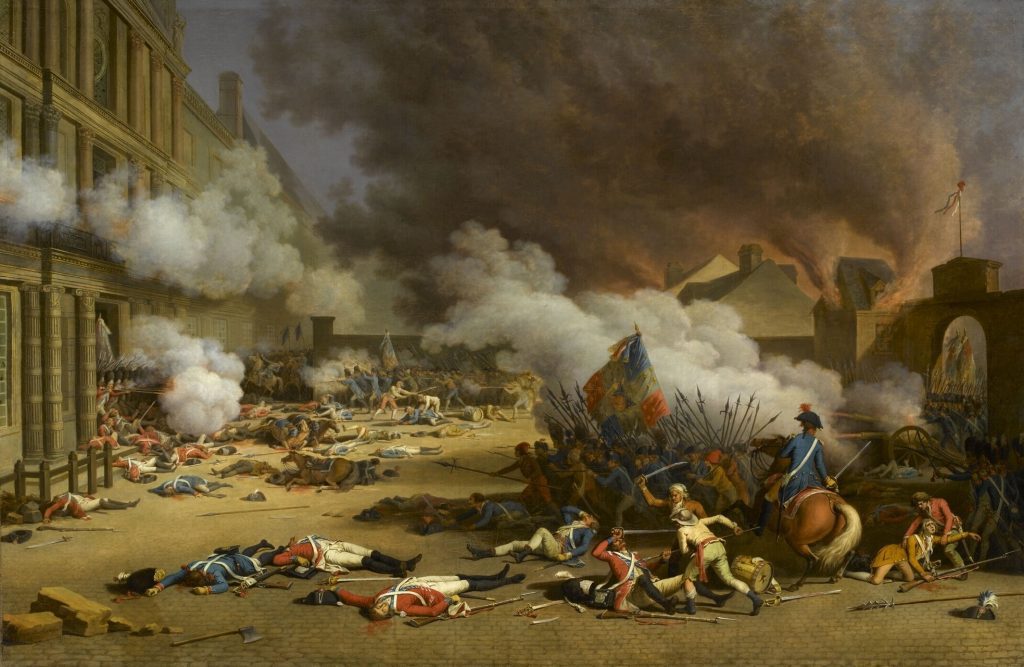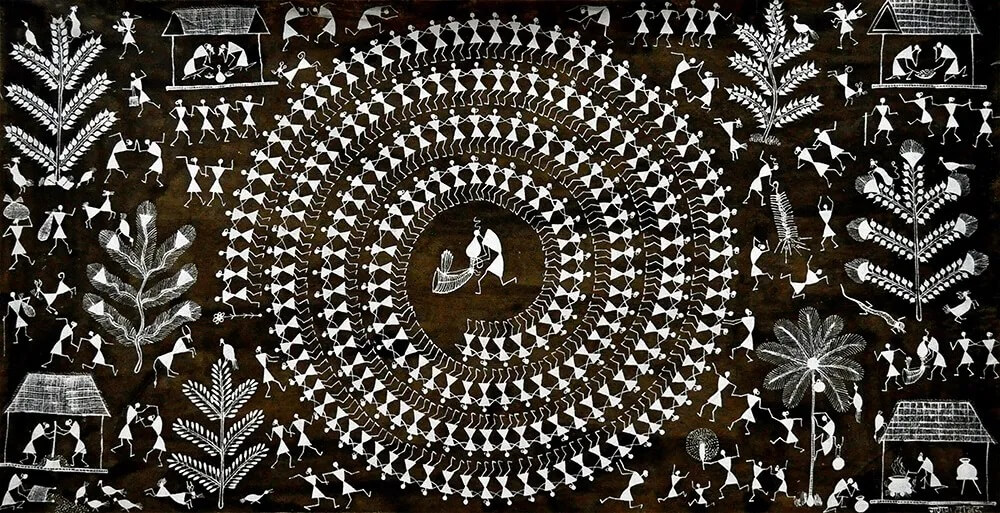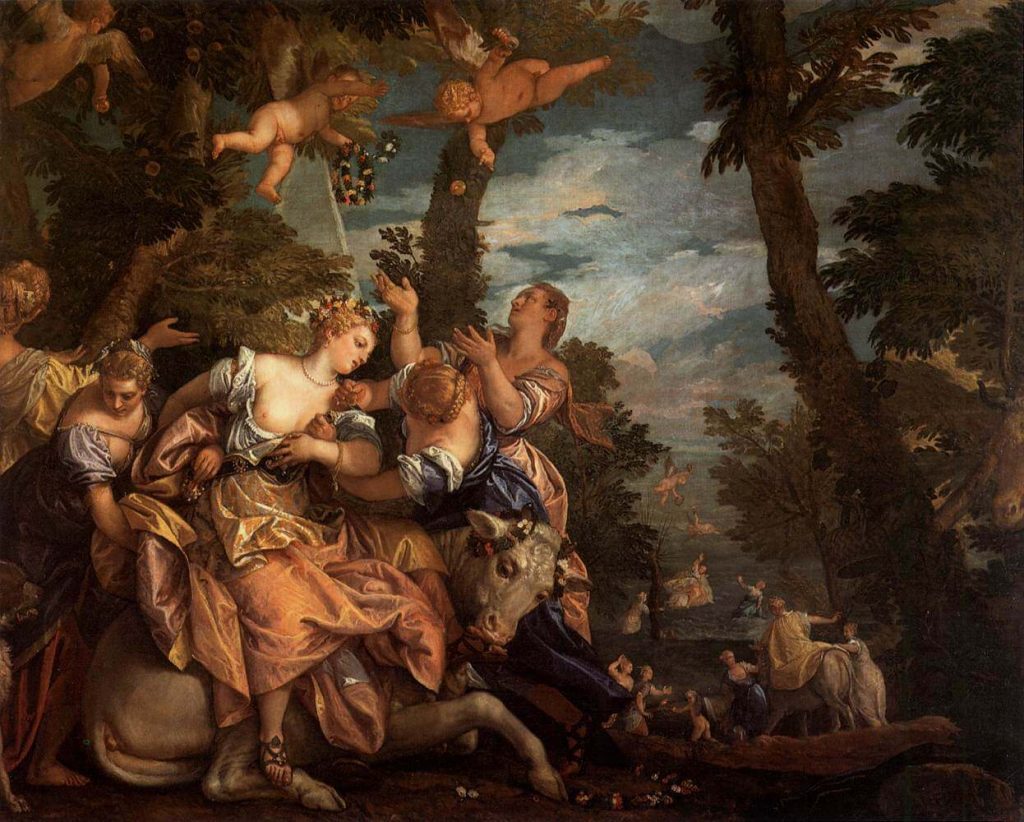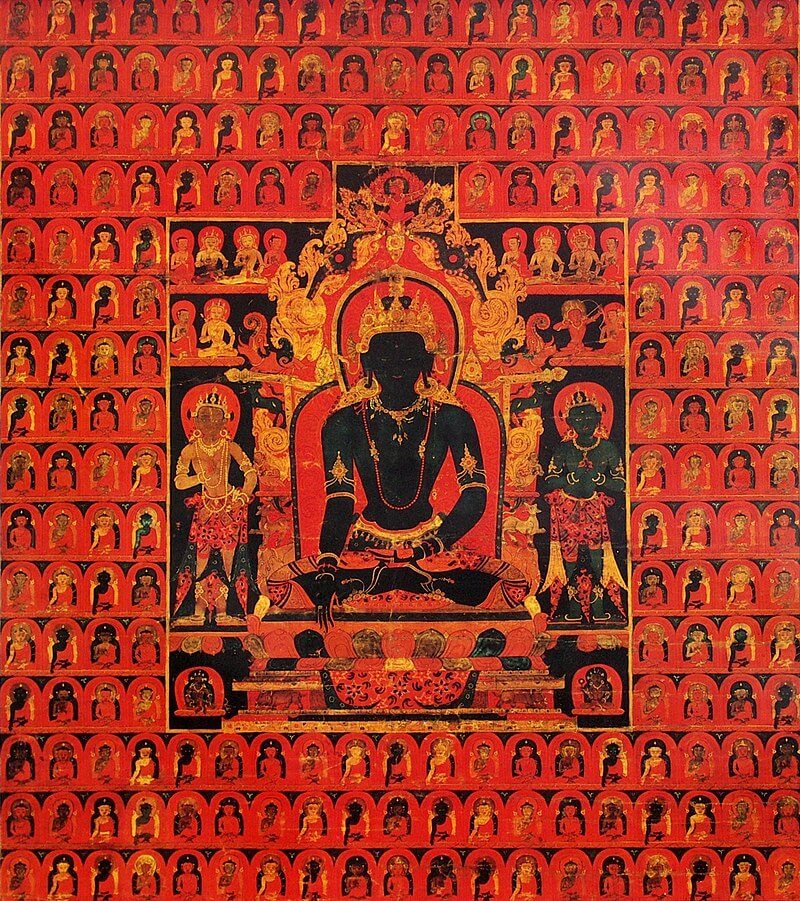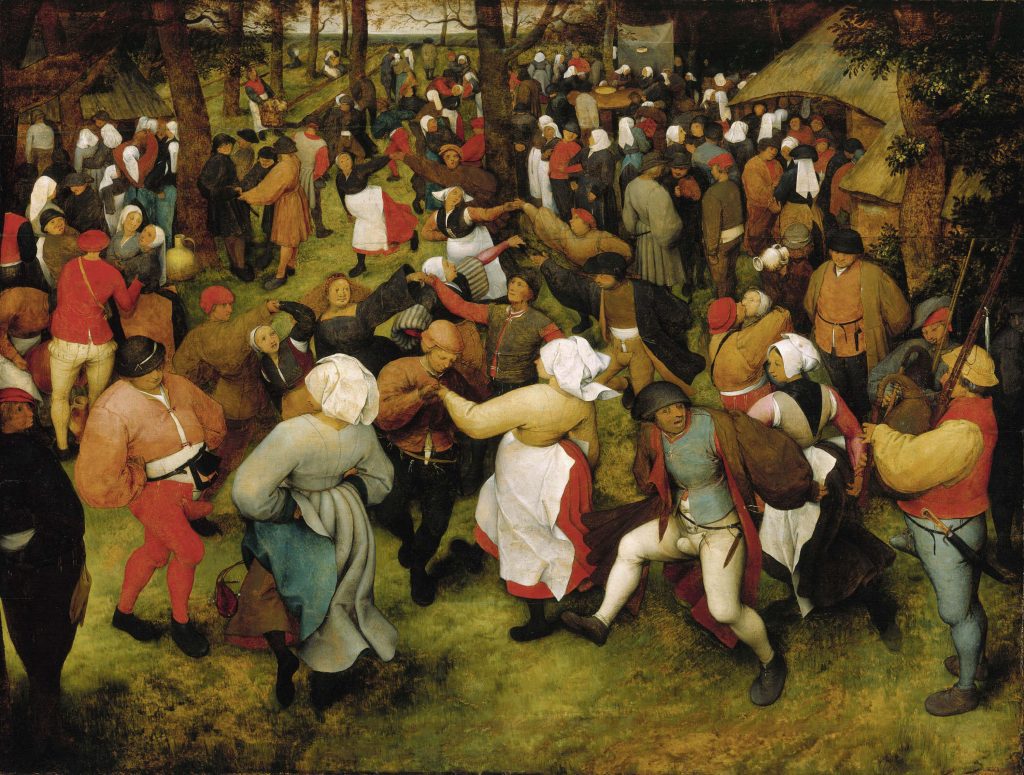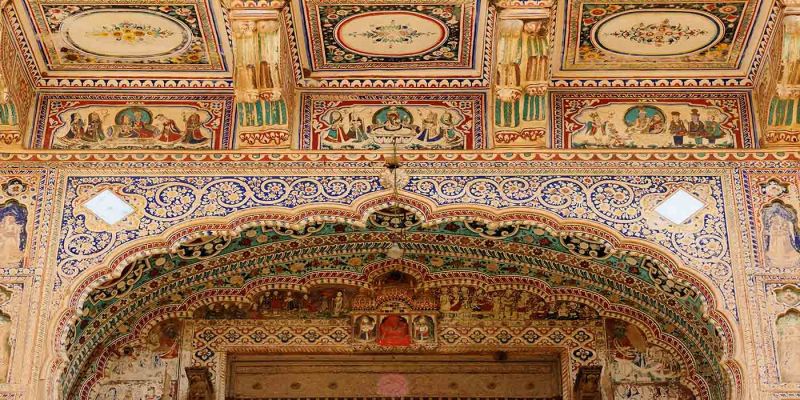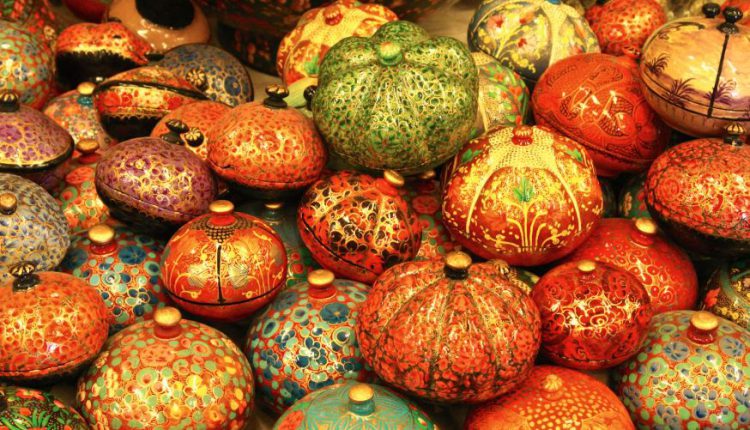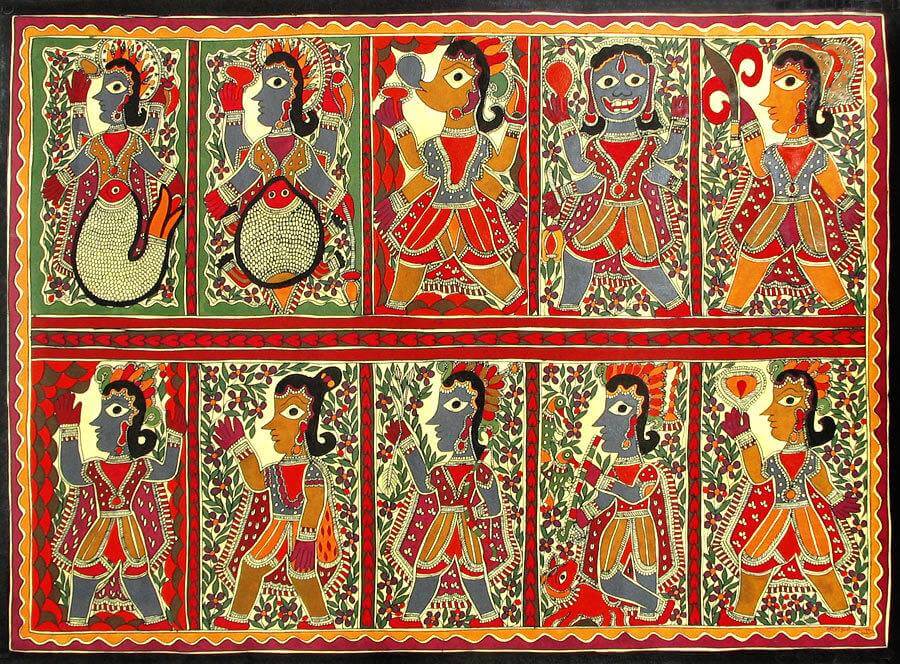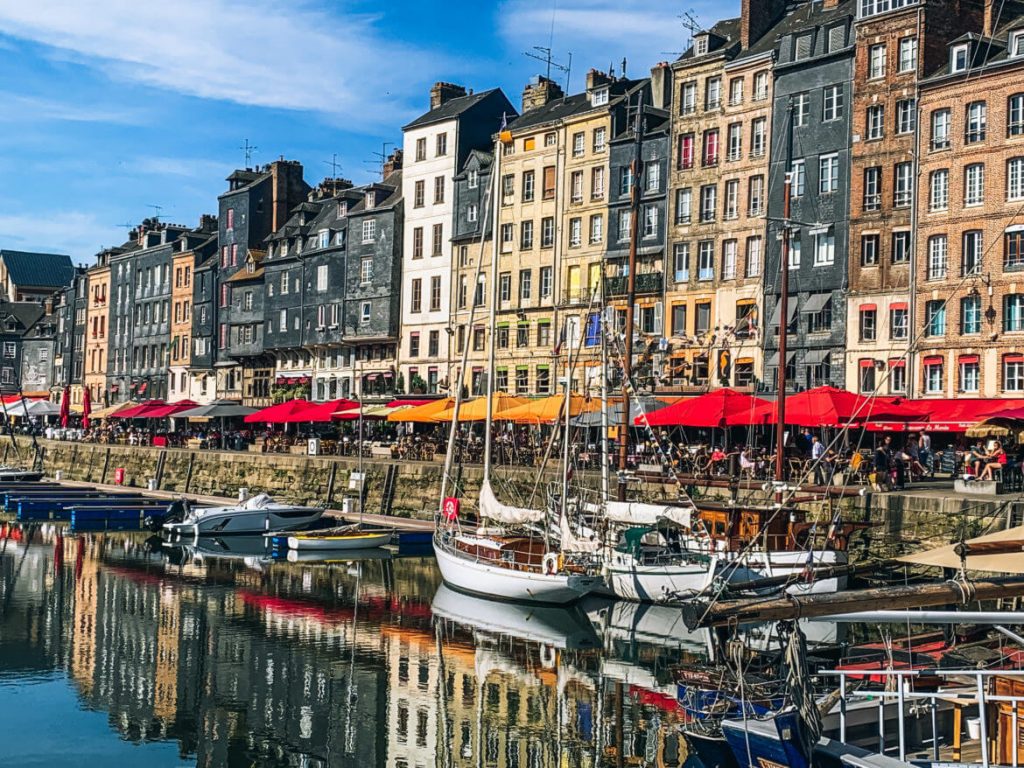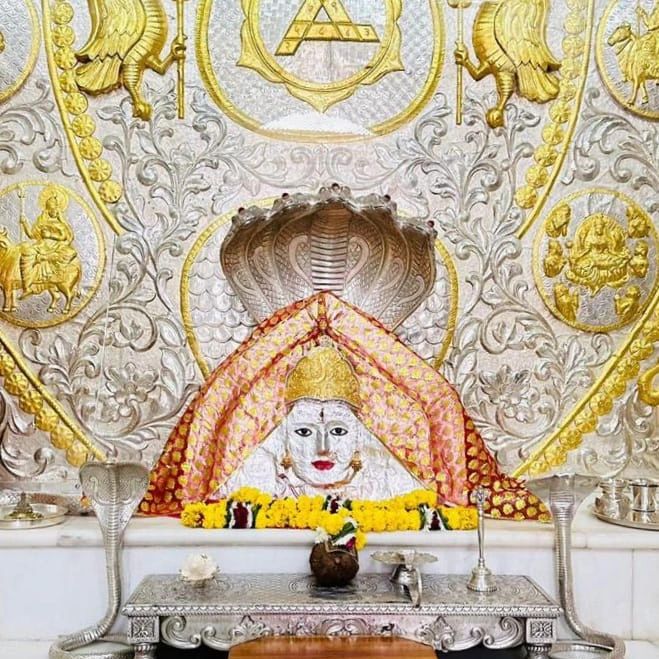Henri de Toulouse-Lautrec (1864-1901)
Henri de Toulouse-Lautrec, perhaps the greatest graphic artist of his time, is most widely remembered for his bold, colourful posters of Parisian entertainers. The son of an eccentric aristocrat, he spent his childhood at the family chateau in south-west France, where he suffered the falls which broke both his legs and stunted his growth. By the time he moved to Paris at the age of 17, he was ill-proportioned and dwarfish.
Despite his upper-class background, Lautrec felt most at home in the nightclubs, dance-halls and brothels of Paris, where he spent his time drinking and drawing his friends and associates: his art centres entirely around the narrow life he led. He reached his peak both as a painter and poster artist in the early 1890s before alcoholism took its toll. He died a broken, pathetic figure at the age of 36.


Little Jewel:
Henri Marie Raymond was the first son born to the Count and Countess de Toulouse-Lautrec-Monfa. As a child, he was so attractive and charming that he was nicknamed 'Little Jewel'.

Countess Adèle:
Lautrec's mother supported him throughout his life, moving to Paris with him when he took up painting and caring for him as an alcoholic. He painted this portrait of the Countess in 1883

Count Alphonse:
Lautrec's father was an outrageous eccentric, who enjoyed dressing up in chain mail like his military ancestors. He devoted himself to hunting and lechery, abandoning his wife and son for long periods.
THE ARTIST'S LIFE
The Night-Club Nobleman
A cripple from childhood, Toulouse-Lautrec left his ancestral home to immerse himself in the nightlife of Paris. Years of heavy drinking brought his brilliant career as a poster artist to an early tragic end.
On 24 November 1864 a son was born to the Comte and Comtesse de Toulouse-Lautrec-Monfa. He grew up in one of the oldest families in France, with ancestors who had fought in the crusades. The French aristocracy had little political power by the late 19th century, but the Lautrec family was very wealthy and kept apartments in Paris as well as country estates around Albi, not far from Toulouse in southwest France.
However, the child's aristocratic stock did him much more harm than good. Though his parents seemed complete opposites - his father, a wild eccentric hunter of women as well as animals; his mother, quiet and devout - they were in fact first cousins. And although he at first appeared a beautiful and healthy child, young Henri had inherited a congenital weakness of the bones.
During Lautrec's early teens, two slight falls (one from a chair, one into a small ditch) caused fractures in each leg. The bones stopped growing and remained weak and feeble, while the rest of his body grew into maturity. By way of cruel compensation, nature rewarded Lautrec with the full attributes of manhood: a thick beard, rich voice and lively libido. 'I may only be a small coffee-poť. he was fond of saying later, but I have a big spout!

A passion for horses:
One of Lautrec's earliest works, which he painted at the age of 17, shows his father driving a coach at breakneck speed. Lautrec inherited the Count's passion for horses - and dangerous thrills.
THE LAUTREC LEGEND
In spite of the popular legend that Lautrec remained a midget, he did in fact grow to over five feet tall. It was his large head and ill-proportioned body which made him appear dwarfish. Added to this, his thick lips, bulbous nose, and short-sighted eyes meant that the charming 'Little Jewel as he had been called as a child, had grown into an ugly cripple. His self-portraits and letters indicate that this is exactly how he saw himself.
Apart from the traumatic accidents, Lautrec's early years were relatively uneventful. Much of his childhood was spent at the Château du Bosc, home of his grandfather, the so-called Black Prince. His cousins provided company, and the days were spent playing croquet and badminton, collecting toy horses and coaches (Lautrec's childhood passion), and learning Latin and English.
His father and uncle were accomplished draughtsmen, and the young Henri seems to have received some encouragement from them. By the age of 14, he was being tutored by a professional artist, René Princeteau, a deaf mute who specialized in horses and hunting subjects.
Early in 1882, Lautrec moved to Paris with his mother. He entered the teaching studio of Léon Bonnat, a painter of portraits and historical subjects, who thought Lautrec's drawing was 'atrocious' and tried to strengthen his sense of form. When Bonnat closed his studio a few months later, Henri and the other students enrolled with a successful history painter called Fernand Cormon, who was much more positive about his talents.

Childhood home: Lautrec was brought up at the Château du Bosc, near Albi in southwest France, among a host of cousins and friends.
By 1885, Lautrec was beginning to find his feet as a young painter in Paris. He had discovered Montmartre, a village suburb in northern Paris, mid-way between the fashionable boulevards and the outer industrial districts, which was rapidly becoming a center of popular entertainment and a haven for artists. Lautrec wanted to work there, but his parents disapproved, and refused to give him the money to rent a studio. So he 'left home' and moved in with René Grenier, a gentleman painter from Cormon's.
Grenier and his ex-model wife Lily were good companions. They took Lautrec to parties, dancehalls, and cabarets, and photographs of the time show him dressing up with his friends in exotic costumes. Meanwhile, another set of friends at Cormon's studio - Emile Bernard, Vincent van Gogh and Louis Anquetin-widened his horizons artistically and helped him find his own style.
This group had been producing experimental work, influenced greatly by the strong designs and pure color of the Japanese prints which were popular and cheap in Paris at the time. In 1888, Lautrec exhibited his work with 'Les Vingt' ('The Twenty'), a group of modernist artists based in Brussels, and the following year he showed it for the first time at the Salon des Indépendants, the forum of the Paris avant-garde.
Lautrec's Painter-Mistress
Suzanne Valadon (1867-1938), one of Lautrec's many lovers, was an exceptional woman and a painter in her own right. She had worked as a laundress and circus acrobat before becoming an artists' model. When she took up painting, she was encouraged by Degas - a lifelong friend - and Renoir, whose mistress she once was.
Lautrec, in spite of his physical deformities, must have possessed an extraordinary attraction for Valadon, since this beautiful and strong-willed woman is said to have made a fake suicide attempt in an effort to get him to marry her. This was probably the reason for his ending their on-off relationship, which had lasted for several years.

Valadon's artist son:
(above) Suzanne Valadon with her illegitimate son, was born when she was 16. He too became a painter: Maurice Utrillo, famous for his street scenes in Montmartre. She encouraged Maurice to paint to distract him from alcohol.

The Blue Room (1923):
This painting is a good example of Valadon's powerful style. Her work is highly individual, but the sleazy subject and bold forms are reminiscent of Lautrec himself.
NIGHTS IN MONTMARTRE
In 1886, Lautrec's parents provided him with a big enough allowance to rent his own studio and share a flat with a medical student friend, Henri Bourges. Both flat and studio were in Montmartre, where the little artist, with his pince-nez, bowler hat, and walking stick had by now become a familiar sight, particularly at night. His life settled into a regular pattern: staying up late into the night drinking cocktails and wine, talking and drawing; & sleeping occasionally, and working furiously.
Lautrec particularly enjoyed cabarets. One of his haunts, Le Chat Noir, was taken over by the singer Aristide Bruant for his new club, The Mirliton, and its coarse cabaret style appealed to Lautrec who became a frequent customer. Artist and singer became close friends, and Lautrec made posters featuring Bruant with his dark corduroy worker's jacket, wide black hat, bright red scarf, and scowling features.
However, Lautrec's immersion in the nightlife of Paris was beginning to take its toll. He was drinking hard by now and had contracted syphilis.
Dr. Bourges was there to keep his condition in check, but though the first few years of the 1890s saw the artist producing some of his most brilliant work, the seeds of self-destruction had been sown.
Lautrec had branched out in several new direction He regularly contributed illustrations to magazines and in 1891, he was commissioned to design a poster for the Moulin Rouge, a club he had been frequented since its opening night two years earlier. This was the famous La Goulue poster -showing the dancer in action behind the Caricatured silhouette of Valentin Désossé. Lautrec was immediately acclaimed as the foremost poster artist of Paris. Throughout the decade he produced many prints – for collectors' albums, menu cards, theatre programs, and book illustrations. He took his work very seriously and gained great professional respect from the Parisian printers. Though he would often arrive in the morning still dressed in his evening clothes, he would work right through the day without a break.

The Moulin Rouge:
From its opening in 1889, Lautrec was a regular patron of this Montmartre nightclub. He exhibited his work in the foyer gallery, designed posters to advertise the performers, and spent night after a night drinking and sketching in the bars.

Double portrait:
At the age of 31, Lautrec posed as both artist and model for this trick photograph. The canvas on his easel displays a clever - and cruel -caricature of his own featured.
In the 1890s, Lautrec became fascinated by the theatre and began to mix in more high-brow circles. He became friendly with the painters Pierre Bonnard and Edouard Vuillard, who contributed illustrations to a modern art magazine called La Revue Blanche. Lautrec also became smitten by Misia Natanson, the flamboyant wife of one of its proprietors, and depicted her in a poster that he designed for the magazine in 1895. His passion was unrequited: Lautrec never experienced a sexual relationship with a woman of his own class. To satisfy his desires he visited the expensive brothels of central Paris. The prostitutes Pro be good models as well as bed companions since they spent much of their time half-dressed, so Lautrec maintained a studio in one of the brothers, which allowed him to observe and draw at his leisure. Many of his drawings and paintings reveal their monotonous existence - waiting for clients, making beds, eating meals, and playing cards.

Doctor Bourges (1891):
Lautrec's flat-mate in Montmartre was a medical doctor, who joined him on his night-club outings and treated him for venereal disease.

The brothels of Paris:
During the last ten years of his life, Lautrec frequented the Parisian ‘houses' – not only for the sexual favors of the prostitutes but because the girls proved excellent models. The artist kept a studio in one of his favorite brothels.

A new home:
In 1897, Lautrec moved to the Avenue Frochot, a middle-class suburb just below Montmartre. To celebrate the move, he invited his friends to a riotous party. By now, he was drinking heavily and his health was declining at an alarming rate.
TENSION IN THE FAMILY
By the time Lautrec was 30 he was going downhill fast. In 1893 Dr. Bourges had married; Lautrec moved back in with his mother and allowed his VD treatment to lapse. His drunken behavior and the subjects he painted caused tension within the family - his uncle even set fire to some of his canvases at Albi.
Lautrec's private income was reduced, forcing him to work to make a living, but his painting was at a transitional stage and he was unable to concentrate on developing a new style. It must have been obvious to all concerned that he had become an alcoholic.
Friends rallied around and tried to get Lautrec away from Paris and all its temptations. Maurice Joyant, an old schoolmate, would take him to the coast for yachting weekends and they twice visited England together. In 1898, Joyant arranged a one-man show for Lautrec in Goupil's Regent Street gallery. The exhibition was a total failure, but Lautrec did not care. He had lost all interest.
In 1897, while visiting the Natansons, Lautrec had suffered hallucinations and fired a pistol at imaginary spiders. He was unable to control his drinking and in 1899, after his mother left Paris for her country estate at Malromé, he fell under the influence of a livery-stable owner, who encouraged his weakness.
By now he was a pathetic sight. He would sit all day drinking in a wine-merchant's shop. One day he was found burning newspapers in the lavatory bowl.
The Cult of the English
During the 1890s France went through a phase of exaggerated enthusiasm for all things English. Tea rooms opened in the most fashionable areas of Paris, English styles in dress were imitated by dandies and society ladies, and English music-hall performers were among the star attractions at the Montmartre nightclubs. Lautrec had several English friends and an undisguised admiration for English manners and customs. The Englishman's sense of correctness and 'good form' is reflected in Lautrec's own stoicism about his physical condition - he never complained about his handicap and referred to it only in jest.
Oscar Wilde:
Lautrec was in London during Oscar Wilde's sensational trial for sodomy in 1895 when he produced this famous portrait. Wilde was one of the key figures of the 'decadent' phase of English art in the 1890s.

The Prince of Wales:
The boisterous lifestyle of the future Edward VII greatly endeared him to the French and encouraged the cult of the English.

COMMITTED FOR ALCOHOLISM
After a violent attack of delirium tremens in February 1899, Lautrec was committed by his mother to a private clinic in Neuilly, just outside Paris. The terror of being locked up for good seemed to spur him to a rapid recovery. He even started drawing again-mainly remembered circus scenes - as if to prove that he still had all his faculties. Finally, the Countess removed him from the sanitorium. Paul Viaud, an impoverished cousin, was paid to supervise him.
Viaud tried to distract Lautrec with holidays on the coast and visits to the opera, his last enthusiasm, but it was too late. At 36, he already looked like an old man, and in the summer of 1901, while taking the sea air near Bordeaux, Lautrec collapsed. His mother took him back to Malromé, where he died on 9 September 1901.
Old before his time:
In this gentle portrait by Lautrec's friend Edouard Vuillard, the little artist looks stooped and old before his time - despite his colorful clothes. He had just over two years left to live.

THE ARTIST AT WORK
Stars of the Music Hall.
France's greatest poster artist, Toulouse-Lautrec was fascinated by the nightclubs and music halls of Paris. He could capture the essence of a performance with a few, simple lines.
A genius for drawing lies at the heart of Toulouse-Lautrec's skill as an artist. He drew a great deal as a teenager, and this pastime was encouraged by the relative immobility imposed on him by his weak legs. Even at this age, Lautrec drew with accuracy and energy, and his temperamental preference for rapid improvisation can also be seen in his early paintings. In Paris, his rigorous academic training under Léon Bonnat and Fernand Cormon disciplined his work and strengthened his sense of form, but he lost nothing of his verve. Over the years his instinctive humor led him to develop a style which lay right on the edge of caricature.
Lautrec's favorite subjects were the people he saw in the nightclubs and cafés of Montmartre. In this preference for city subjects, he followed painters like Edgar Degas and Edouard Manet, who in the 1870s had made scrupulous studies of Parisian life, of people's poses and gestures, composing pictures that gave a sense of the to-and-fro of city life. Lautrec shared these aims - his portraits are not treated in the stiff, conventional way of academic painters. He is as much interested in capturing the way people stand, and their gestures, as in portraying their faces.

Lautrec and lithography:
Lautrec's posters are lithographs - prints taken from drawings made on flat blocks of limestone, using the kind of press shown in this detail from a magazine cover he designed. Since each color had to be printed from a separate stone, he employed only three or four colors in each poster, which suited the simplicity of his drawing, and gave impact to his images. Lautrec was an expert craftsman, who worked hard in the printing shop and even evolved some new techniques.


Moulin Rouge: La Goulue:Dated 1891, Lautrec's first poster made his reputation. La Goulue – with her distinctive top-knot - flashes her frilly underwear behind the emaciated silhouette of Boneless Valentin. The customers of the club are shown merely as a jaunty row of hats. Despite its apparent spontaneity, the poster was the result of many studies, including the sketch below.

A new, late style:
The heavy use of paint in this detail from The Private Room at The Rat Mort (1899) is typical of Lautrec's later works. The style is much coarser than before, but certain characteristics remain - notably the flowing lines of the hair and headdress, and the way the light grotesquely distorts the woman's features.

Comic self-portrait:
Lautrec often made rapid but effective cartoons of himself and his friends. Here, as usual, he selects the most apparent feature - his own lack of height - and exaggerates it for comic effect. Many of Lautrec's paintings and posters also verge on caricatures.
THOUSANDS OF SKETCHES
Although his paintings have a great sense of immediacy, they were carefully prepared. Lautrec carried a small sketchbook with him wherever he went, and thousands of rapid drawings and jottings survive to tell us how frequently he drew what caught his eye. He developed his major images from these initial visual impressions.
In the paintings themselves, Lautrec tried to sustain the spontaneity of the first idea, and he liked to work fast. To achieve this he used Peinture à l'essence, paint thinned considerably with turpentine, a runny medium that allowed him to 'draw' with the brush. And he preferred to work on absorbent cardboard, rather than canvas, so that the paint dried more quickly and he could so maintain his momentum. Lautrec never painted smooth or completely finished pictures - which he likened to billiard balls - but made vigorous fresh and direct images.
Lautrec was never slapdash, however. He was a dedicated craftsman who knew much about technical matters, especially in printmaking. Even after a hard night's drinking, he would arrive early at the workshop to supervise the printing of his lithographs. He also perfected a novel printmaking technique called crachis (spitting), in which he flicked ink onto the lithographic stone with an old toothbrush to give the print a speckled effect.
Yvette Guilbert Taking a Curtain Call (1894):
To create this image, Lautrec painted over a photograph of a lithograph. The singer's long black gloves and E exaggerated features make her immediately recognizable.

Parisians in the Spotlight
Edouard Manet and Edgar Degas were among the first artists to take ordinary Parisians as subjects for serious paintings. Others soon followed their lead, and by the 1880s, when Lautrec arrived in Paris, city night-life was a favourite subject for the avant-garde. Like Manet and Degas, Lautrec enjoyed painting the women of Paris - especially night-club entertainers and 'ladies of easy virtue - often beneath coloured club lighting. And all three used 'snapshot' compositions borrowed from the recently developed technique of photography.
Bridgeman Art Library

Edouard Manet (1832-83) Nana:
The courtesan Nana stands semi-dressed in her boudoir, while a well-heeled admirer looks on. He is cut off by the edge of the picture - a popular 'snapshot' device.

Edgar Degas (1834-1917):
At the Ambassadeurs Nearly 20 years before Lautrec designed posters for this club, Degas shows its performers transformed beneath coloured lights.
THE POSTER DESIGNS
Lautrec's great posters, with their arresting images, were scrupulously prepared: full-size preliminary drawings exist for most of them. Among the most famous are those featuring the celebrated popular entertainers of the day. By the 1890s the French café-concert or music hall had a well-established hierarchy of stars, and it was the job of the poster designer to promote them. Lautrec had the remarkable ability - which he exercised in paintings as well as posters - of catching the essence of a performer's act in a curt, but striking fashion.
The poster made for Aristide Bruant is at first sight nothing more than a few lines and several flat zones of color. But the fundamentals of the entertainer are all there: Bruant's characteristic black hat and red scarf, his streetwise expression, the looming shadow of the Parisian worker whose hard life formed the substance of Bruant's crude slang songs. At his best, Lautrec was a master at packing a multitude of meanings into the simplest linear framework.
Lautrec matured as an artist during the second half of the 1880s when the Paris art world was a hotbed of new ideas. But despite his friendships with avant-garde painters, Lautrec was never at the forefront of the experiment. He shared with artists like Van Gogh and Gauguin a great interest in Japanese prints, but while these painters developed a style of thick contours and extreme simplification from this source, Lautrec was not prepared to go so far from naturalistic observation. The draughtsmanship of Degas was always his prime inspiration.
During the second half of the 1890s, the quality of Lautrec's work declined along with his health and self-control. He produced his last major poster in 1896. In the same year, tiring of the fluent rapidity of his earlier paintings, he began to use thicker paint and duller, heavier tones. But the 31 posters Lautrec made during his life were a lasting contribution to the history of graphic design. He was largely responsible for establishing the poster as an art form.

Le Divan Japonais (1893):
This striking image is a classic example of Lautrec's lithography: using just four colors – orange, yellow, green, and black – he creates an image of great vitality and savage wit. Jane Avril, the rising star, sits gracefully in the night-club audience, her lips tightly pursed, while the aging figure of Yvette Guilbert sings on stage. She is cut off at the neck, but still & recognizable by her long gloves.

Distinctive features :
A detail from Le Divan Japonais isolates two distinctive features of Lautrec's poster art -- his use of silhouette, seen in the flattened cut-out of Jane Avril's body, and the speckling of some areas with his 'spitting' technique, used here to add texture to the man's grey gloves.
THE MAKING OF A MASTERPIECE
At the Moulin Rouge
Begun in 1892, this striking work shows a group of Lautrec's friends at the bar of the Moulin Rouge. Seated around the table are the elderly music critic Edouard Dujardin, a dancer known as La Macarona, photographer Paul Sescau, and a champagne salesman and debauchee Maurice Guibert, who sits next to an unidentified redhead.
Behind this group Lautrec, himself is seen walking with his tall cousin, while La Goulue adjusts her hair beneath the watchful eye of Môme Fromage. An extra strip of canvas showing a woman's face in close-up was added sometime after the rest of the painting. Her startling green face, which now dominates the foreground, helps to involve the viewer in what must previously have been a restrained and balanced composition.

Mirror image :
The mirrors which line the walls make an undefined background against which the silhouetted figures stand out boldly. In this detail, the mirror reflects the image of Edouard Dujardin's trilby hat.

Ornate head-dress :
This exotic hat looks striking against the bright red hair of the unidentified woman. Lautrec was fascinated by the shapes of headdresses: everyone in the picture has a distinctive hat or hairstyle.


Under the spotlight:
A woman's face, lit in brilliant green, stands out vividly against the brown and black background. The line where the extra strip joins the original canvas is clearly visible on the left.

Cartooned cousin:
Lautrec often emphasized the gawkiness of his tall cousin Dr. Gabriel Tapié de Céleyran. In 1895, he made this amusing cartoon showing him dressed as a Turk – but still wearing his pince-nez.

Local photographer:
The man on the far side of the table in the painting is the Montmartre photographer Paul Sescau. Lautrec and he remained friends: the artist designed this humorous and slightly risqué poster for him in 1894.
Gallery
Toulouse-Lautrec immortalized the nightlife of Paris in the ‘naughty nineties. During the first part of the decade, he was at his peak both as a poster artist and painter. Towards the end, his superb technical ability declined along with his health.
At the Circus, Fernando was Lautrec's first important painting. He painted the circus and his favorite clown Cha-u-kao many times, but his most constant source of inspiration was the Montmartre dance hall The Moulin Rouge.
The poster of the dancer Jane Avril is probably the artist's best-known image. She and the other Moulin Rouge performers - particularly the lascivious La Goulue - appear over and over again in his paintings.
Even when he was not painting the Moulin Rouge characters, Lautrec always depicted the people he knew. The poster of Aristide Bruant advertises his friend's appearance at the Ambassadeurs club. And The Salon at the Rue Des Moulins depicts the prostitutes in his favorite brothel.

At the Circus Femando 1888:
An early example of Lautrec's forceful caricature and strong graphic style show the ringmaster and a bare-back rider at a famous Montmartre circus. The ringmaster, with his exaggerated features and silhouetted suit tails, looks almost as if he has been cut out and stuck onto the flattened circus ring. The painting was hung in the Moulin Rouge from the club's

Aristide Bruant at the Ambassadeurs 1892:
The satirical cabaret singer Aristide Bruant, with his distinctive hat, scarf, and stick, scowls threateningly, while the silhouette of a man leaning in the doorway evokes a sleazy club atmosphere. The manager of the Ambassadeurs club was outraged and refused to use the poster until Bruant threatened to cancel his appearance.

La Goulue at the Moulin Rouge 1891–92:
With her dress slashed to the waist and her disdainful features distorted by the artificial light, Louise Weber – La Goulue - makes her entrance on the arm of her sister Môme Fromage ('cheese tart') and another woman. The front of Môme Fromage's face is cut off violently by the edge of the picture.
IN THE BACKGROUND
The Moulin Rouge
A sensation from its opening night, the Moulin Rouge was Montmartre's most spectacular nightclub. Its frenzied atmosphere of drinking and dancing attracted patrons from all over the world.
Of all the famous nightclubs seen in Toulouse-Lautrec s paintings, the Bal du Moulin Rouge most perfectly symbolizes the heady mix of glamour and seaminess of night-time Montmartre. A nightclub on the grand scale, the place attracted people from all walks of life, who found its debauched atmosphere irresistible. Toulouse-Lautrec was a regular patron from the opening night and found the intense, vulgar scene - and the magnetically wicked female dancers - ideal material for his art.
THE MOULIN ROUGE:
The Bal du Moulin Rouge opened in 1889 on the Boulevard de Clichy, taking the place of a cheap dance hall called the Reine Blanche. From 1891, the entrance foyer became a picture gallery where throngs of patrons drank and mingled with pimps, prostitutes, dancing girls, and undercover police officers.
The interior comprised a huge dancing area surrounded by galleries, a vast bar, and a stage on which a bizarre variety of entertainers appeared each night, including clowns, singers, exotic dancers, acrobats, and some lively cancan troupes.
The Moulin Rouge also included an extensively covered promenade enclosing a garden with small tables and chairs where patrons could sit and drink. Dominating the centre of the garden was a life-size elephant made out of cardboard, large enough to contain a whole orchestra.
Around it, monkeys were kept tethered on chains to entertain the customers. People could also go for donkey rides around the garden - if they had not drunk too much of 'the green fairy', or absinthe, the aniseed drink most popular in the bars of Montmartre.
The red windmill on the roof, a beacon for those seeking the pleasures of the flesh, was a wooden model recalling the days not so long before when Montmartre was a leafy hill village, dotted with genuine windmills of much larger proportions. Charles Zidler, who opened the Moulin Rouge, went all out to provide entertainment on a scale lavish enough to draw clientèle away from the main competition, which consisted of the ElyséeMontmartre dance hall and the Casino de Paris in the rue Clichy.
Setting the tone for the evening would be a circus-like din of music by Offenbach and Olivier Metra played at full volume on trombones, cymbals, and drums. By the turn of the century came dance fads such as the mattchiche and the cakewalk and the bands would work for the crowd up into such a drunken frenzy that foreign visitors were left aghast. One broadminded magazine reporter from England wrote, 'In this place, no passions need be curbed. There is shouting and horseplay; women are carried around the hall on the shoulders of men; there is a fierce increasing cry for a drink.

The Moulin Rouge :
Named after its 'red mill' which was lit up at night, the Moulin Rouge opened on the Boulevard Clichy in Montmartre in 1889. Its vast dance floor and exotic entertainment attracted Parisians of all classes.
But the main attractions for the male clientèle of the Moulin Rouge - who came from places all over the world, from Russia, England, Rumania and South America - were the women with their saucy, promiscuous reputation. The sex trade was flourishing on the fringes of Paris. Vice was not only big business in nightclubs and brothels: establishments abroad also sought Parisian girls for prostitution. The Moulin Rouge, which was considered the biggest flesh market in Europe, was glittery and frivolous on the surface, but women working in the blurred vocation of dancer-prostitute could easily find themselves kidnapped by suppliers of the white slave trade.

A cardboard elephant:
At the back of the club a vast cardboard elephant dominated the garden, where patrons could take donkey rides. The elephant could hold a whole I orchestra.

High jinks:
Patrons and performers took the floor together, dancing in the energetic style made popular by the stars of the Moulin Rouge such as La Goulue and Valentin Désossée – the boneless wonder.

Inspecting the girls:
The Moulin Rouge was Europe's biggest flesh market, attracting male clientele from all over the world. Many of its 'dancers' were little more than prostitutes.
UPPER-CLASS PLEASURES
Although a poster described the Moulin Rouge as 'le Rendez-Vous du High Life', most society figures would have found the crude conversation and the constant vulgarity too much for their taste.
But a good number of apparently respectable bourgeois Parisians found the flirtatious bar girls and the generally risqué atmosphere of the Moulin Rouge far more fascinating than the tamer ballrooms of the Champs-Élysées. These pleasure-seekers from the upper classes would be prime targets for expensive, lavishly-dressed prostitutes who were skilled in the art of persuading men to buy them expensive drinks - and were always on the lookout for a wealthy 'sugar daddy'.
Among the entertainers who performed at the Moulin Rouge, a few individuals established special notoriety for their outrageous styles. To promote them, Zidler asked Toulouse-Lautrec, who was visiting several times a week and whose paintings were on display in the foyer, to prepare the poster for the 1891 season.

The dancer, Yvette Guilbert:
The most successful of all the performers at the Moulin Rouge, black-gloved Yvette Guilbert sang risqué contemporary songs in a rasping voice.

The singer, Aristide Bruant :
A leading singer-songwriter on the caféconcert circuit, Bruant sang about the poor people of Paris in a bitter and mocking way. In between songs he insulted the fashionable audiences who flocked to hear him.

La Goulue's sad end :
For five years the star dancer at the Moulin r- Rouge, La Goulue finally ); grew too fat, and was te forced to perform in a fairground booth. The photograph shows her on the steps of her caravan.
LA GOULUE
Toulouse-Lautrec chose as his subject a 20-year-old dancer called 'La Goulue' (the insatiable) who had s been lured away from the Elysée-Montmartre. Her cancan act was a sensation. She was a plump, pale woman, tightly bound in a black dress that featured a tumbling froth of skirts, swirling lace, and fancy undergarments trimmed with attractive colored ribbons.
Over the years the cancan style had achieved a reputation as a kind of mildly erotic ritual in which the beauty of the dancer mattered less than the L skill of the performance - which always ended with the splits.
La Goulue's troupe - who all had cheeky underworld names such as 'Grille d'Egouť (sewer trap); & 'La Môme Fromage' (cheese tart) and 'Nini Patte en l'Air' (Nini leg-in-air) - specialized in a very f popular routine called the 'quadrille naturalist which involved much high raising of legs in the air.
La Goulue's reign as the queen of the Montmartre showgirls was characteristically short. After five years, having grown too fat, she was forced to make her living by exhibiting herself in a fairground booth, then went on to work as an animal trainer. Finally, she became a brothel servant and even sold sweets for a time outside the Moulin Rouge. In 1929 she died an alcoholic derelict.
THE BONELESS WONDER
One of La Goulue's male dancing partners at the Moulin Rouge was Valentin, the owner of a small Montmartre café. His extraordinary contortions on the dance floor earned him the nickname 'Le Désossé' – the boneless wonder. A short, curiously double-jointed figure, his frenetic movements made it seem as if his body was made of rubber, and always had the crowds gathering round in amazement. Another dancer, Jane Avril, also demonstrated frenetic, nervous energy, but her style was contrastingly sophisticated and refined. Her English chorus-girl costume was restrained compared to the tawdry excesses of some of the dancers and she went on to enjoy a successful solo career. Like La Goulue, however, she too died in poverty in the 1940s. Yvette Guilbert, the singer with the long black gloves, was one of the few artists to develop her career successfully. She left the Moulin Rouge to become an international star, touring Britain and the United States.
CHA-U-KAO THE FEMALE CLOWN
After La Goulue's departure from the scene, a large female clown-cum-dancer won favor with the crowds. Dressed in Japanese costume and boasting the pseudo-Japanese name of Cha-U-Kao, she rode horses bareback to sustain the magic of the Moulin Rouge for new more years. Japanese culture was very fashionable in the 1890s, and Toulouse-Lautrec himself enjoyed dressing up for his friends as either a samurai warrior or a geisha girl.
But the tearaway life of hard-drinking and constant performing inevitably took its toll on most of the overnight celebrities of the Moulin Rouge.
Toulouse-Lautrec had to move fast sketching faces & and figures when the light permitted before his glittering subjects were abandoned to obscurity by alcohol or a fickle change in fashion.

Dancing the cancan:
Each evening the performance opened with the cancan, to the music of Offenbach played at full volume. The dancers wore black stockings and frothy undergarments, their virtuoso display always ending with the splits.
William Blake ‘The Painter Poet’
-
Posted by
Umaid
- 0 comments
Warli Painting
-
Posted by
Umaid
- 0 comments
Titian ‘The Italian Renaissance’
-
Posted by
Umaid
- 0 comments
Thangka Painting Style
-
Posted by
Umaid
- 0 comments
Pre- Mughal Traditions of Painting in Marwar
-
Posted by
Umaid
- 0 comments
Pieter Bruegel the Elder ‘The Draughtsman and engraver ‘
-
Posted by
Umaid
- 0 comments
Pichwai Paintings of Rajasthan
-
Posted by
Umaid
- 0 comments
Phad Paintings of Rajasthan
-
Posted by
Umaid
- 0 comments
Paul Gauguin ‘Mysteries of Paradise’
-
Posted by
Umaid
- 0 comments

